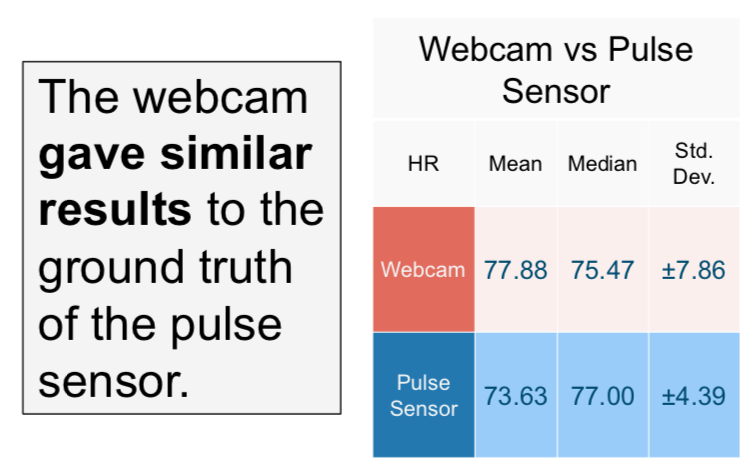
See the poster from 2019 RET Summer Symposium
What is photoplethysmography?

- Photoplethysmography (PPG): using light to measure the pulse
- PPG yields more than the heart rate with signal processing techniques
- Systole: highest arterial pressure
- Diastole: lowest arterial pressure
Webcam Pulse Reader- Remote PPG GUI

- Light intensity is given as an 8-bit value in grayscale
- Intensity ranges from 0-255
- Signals and HR data update in real-time
- Intensity of “region of interest” (ROI)calculated for each image
PPG Digital Signal Processing

- Signal is filtered to remove high and low frequency components
- Useful frequencies for signal are determined
- Peak-to-peak times are determined (inter-beat interval – IBI)
Filtering with Fast-Fourier Transform

- Heart rate (HR) is averaged IBI measured in beats per minute (BPM)
- Heart rate variability (HRV) shows how IBI changes
- Peak frequency of 1.27 Hz for this PPG corresponds to a HR of 76.2 BPM
- This matches ground truth
Comparing Webcam and Pulse Sensor PPG



Acknowledgements
Thanks to my mentor Yongyi Zhao, my fellow interns Azka Bukhari, Gary Johnson, Shelia McDaniels, Ali Ozek, & Pamela Williams, RSTEM team Allen Antoine & Christina Crawford, & the NSF Expeditions in Computing (Grant NSF-IIS-1730574).











